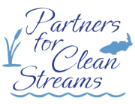
As told by Craig Krajeski, Maumee Corps Seasonal Internship Team Lead
I am very excited to be joining Partners For Clean Streams through the Maumee Corps Internship as a team leader. I view this internship as an excellent opportunity for me to gain valuable environmental field experience that will help me accomplish my career goal of becoming an environmental consultant. I believe this internship will also allow me to hone my leadership abilities and provide me with valuable knowledge in habitat restoration practices and plant identification skills. As a University of Toledo alumnus, I was particularly interested in this internship because of the positive impacts the habitat restoration work will have on the section of the Ottawa River that runs through UT’s campus. I believe the completion of this project will be incredibly beneficial to UT as it will make the Ottawa River more accessible and visible to those on campus. I have truly enjoyed the work we have already done this summer, and our team of interns is incredibly hard working and efficient in removing non-native invasive plant species from the banks of the Ottawa River and within Sylvan Prairie Park in Sylvania, Ohio. In the weeks to come, I am looking forward to working with my fellow interns in the removal of invasive non-native plants from Sylvan Prairie and the University of Toledo as we continue on in our habitat restoration efforts.
I graduated from the University of Toledo in May 2011 with a bachelor’s degree in Environmental Science and magna cum laude honors. While earning my degree, I took a strong interest in aquatic ecology and environmental issues affecting Northwest Ohio. Before joining Partners For Clean Streams and the Maumee Corps Internship I gained field and research experience through Dr. Hans Gottgens lab within UT’s Environmental Science department. Starting in July 2010 and through October 2010, I assisted a University of Toledo Master of Science student in sampling and data collection for his thesis researching freshwater mussels in three Northwest Ohio streams. While sampling in the field, I was responsible for recording and organizing all of the data that we collected. This data included water depth, sediment composition and compaction, and mussel species and shell dimensions. As I gained experience in the field, my duties expanded to identifying and measuring the live mussels we collected and searching sediment samples for juvenile mussels. Through this field work I gained experience using the Qualitative Habitat Evaluation Index (QHEI) which was used to score each site in which we sampled for mussels, and I recently completed a two day training class to become certified as a level 2 QHEI specialist. After the field season ended in 2010 and each site was thoroughly sampled for live mussels, I completed a personal research poster analyzing aspects of the data we collected & presented my findings at Posters at the Capitol 2011 in Columbus, OH. My research focused on correlating each sites’ mussel species diversity to its QHEI score and analyzing populations of a particular mussel species that was found in all three streams. The things I am learning during this internship are expanding and building off of my previous experiences. I have a better understanding of stream ecology, not just small parts but as a whole. I am very excited to combine this knowledge and apply it in my future career in stream ecology. I consider myself lucky.
